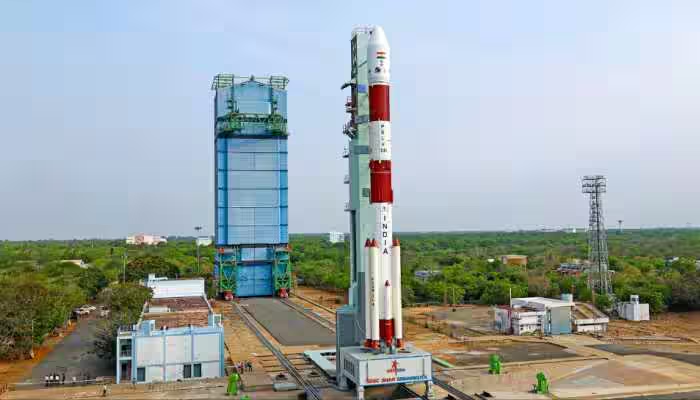On May 18, 2025, the Indian Space Research Organization (ISRO) launched its 101st Space Mission-PSLV-C61 from Sriharikota. Its goal was to install EOS-09 Earth Overview satellite in orbit. The first and second phase of the rocket performed well, but the mission failed due to a problem in the third phase. ISRO later confirmed that the pressure of the chamber decreased in the third phase, causing the rocket satellite to not reach its planned orbit.
Let us understand in simple and easy language what would have happened.
What is PSLV and what does its third stage do?
Polar Satellite Launch Vehicle (PSLV) is one of ISRO’s most trusted rockets. It has four stages that work to take satellite one after the other into space.
The third stage, called PS3, moves on solid fuel – a packed chemical mixture that burns to push the rocket and upwards. There is pressure inside the chamber pressure motor when the fuel burns. It must stay high to produce enough thrust (push). If this pressure falls, the motor cannot generate the necessary power to keep running – and the mission fails.
What went wrong in PSLV-C61?
ISRO has confirmed that the third phase failed as the pressure of the chamber was unpredictable. This means that the motor did not put enough emphasis to take EOS-09 to its right orbit. The exact reason is still under investigation, but here are six possible reasons, which are explained with simple examples:
Solid fuel problem
If the fuel cracks, air bubbles or unevenly packed, it cannot burn properly. Think of a Diwali rocket made of bad ammo – it just extinguishes instead of flying. Leak in motor case
The motor is like a strong container. If there is any crack or hole in it, hot gases come out, which reduces the pressure. It is like a small hole pressure cooker – the steam is leaked and the food will not cook well.
Nozzle malfunction
The nozzle removes gases from the motor. If it is damaged or blocked, the pressure does not form properly. Imagine a bad water tube with bad nozzle – the water does not sprinkle vigorously.
Ignition or burning fault
Fuel should be burnt evenly after igniting. If this does not happen, the pressure decreases. Trying to burn wet wood – it burns but does not burn.
Vibration or structural stress
Rockets move a lot. Due to excessive vibration, small brakes can be applied in motor or nozzle. For example, after hitting a lot of pits, the tire of the car bursts.
Testing faults
If no problem is found in the tests conducted before the launch, it can be revealed in the middle of the flight. Just as a phone looks fine, but there is a hidden malfunction, which cannot be caught in the factory.
Why does this failure matters
The third phase is important – it gives the last push to install the satellite into orbit. If this phase fails, the rocket does not reach the right height or speed. In this case, EOS-09, which was for Earth observation works such as city planning, agriculture and national security, was lost.
How many times has PSLV failed?
PSLV is very reliable, it has failed only three times in more than 60 missions:
1993-PSLV-D1: Software and stage separation problem.
2017-PSLV-C39: Failed to open heat shield.
2025-PSLV-C61: Pressure fall in third phase motor.
Although ISRO’s GSLV-F10 in 2021 also failed due to lack of pressure, it was in the liquid-fuel phase, not in a solid phase like PSLV.
What will ISRO do next?
ISRO has already formed an expert review team. They will do the following work:
Analyze telemetry data (information during rocket flight).
Observe design, fuel, motor case and nozzle.
Check all pre-launch test results.
ISRO has a strong track record to overcome failures – whether it is Chandrayaan or Gaganyaan Testing – and this time too nothing will be different. They will identify the blame, fix it and return to stronger.
In short
The PSLV-C61 mission failed due to a decline in chamber pressure in the third stage, using solid fuels. This can be caused by fuel problems, leaks, nozzle malfunctions or missed defects. EOS-09 was lost, but ISRO is investigating and will fix the problem for future missions.
It is as if the car has deteriorated in the middle of the journey – the mechanic (ISRO) is already examining the engine (third stage) so that the next journey can be done smoothly.
(Girish Linganna is an award-winning science writer and a defense, aerospace and geopolitical analyst, who lives in Bengaluru. He is also the director of Add Engineering Components India Private Limited, who is a subsidiary of Add Engineering GMBH, Germany.)
